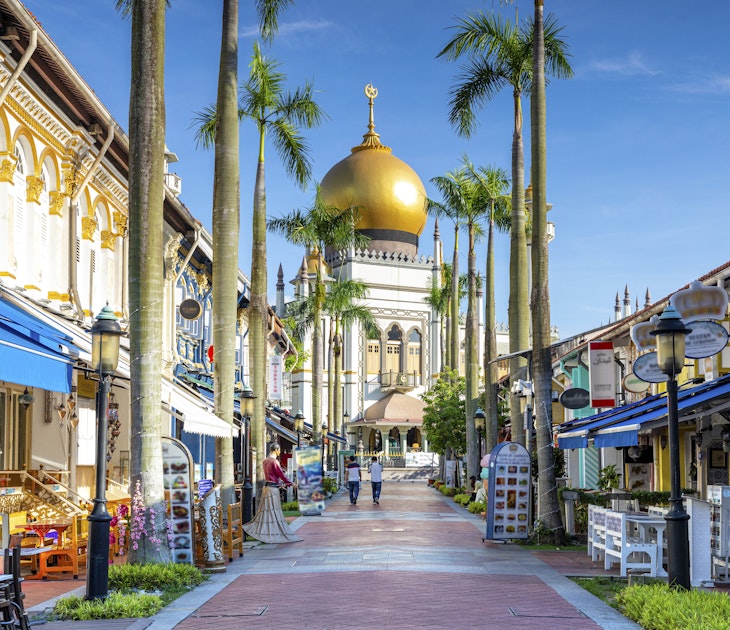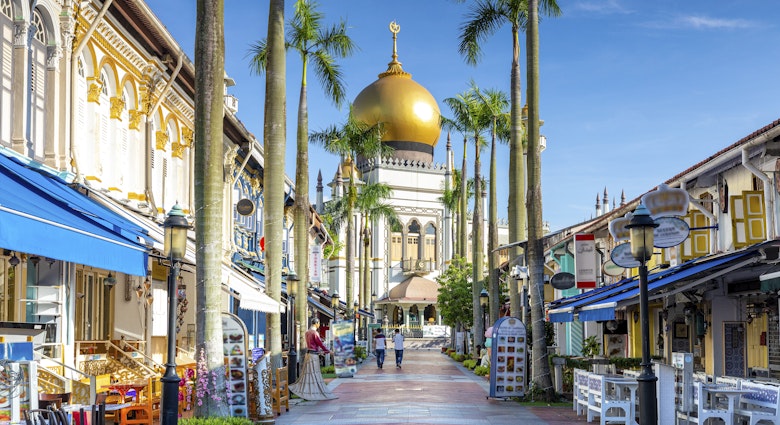Singapore’s extensive public transportation system makes navigating this compact country a breeze.
While the cost of living makes Singapore one of the more expensive countries to visit, you might be able to save a little by learning how to make full use of its bus and subway networks. Stretch your budget and see more of this beautiful nation with our guide to getting around Singapore.
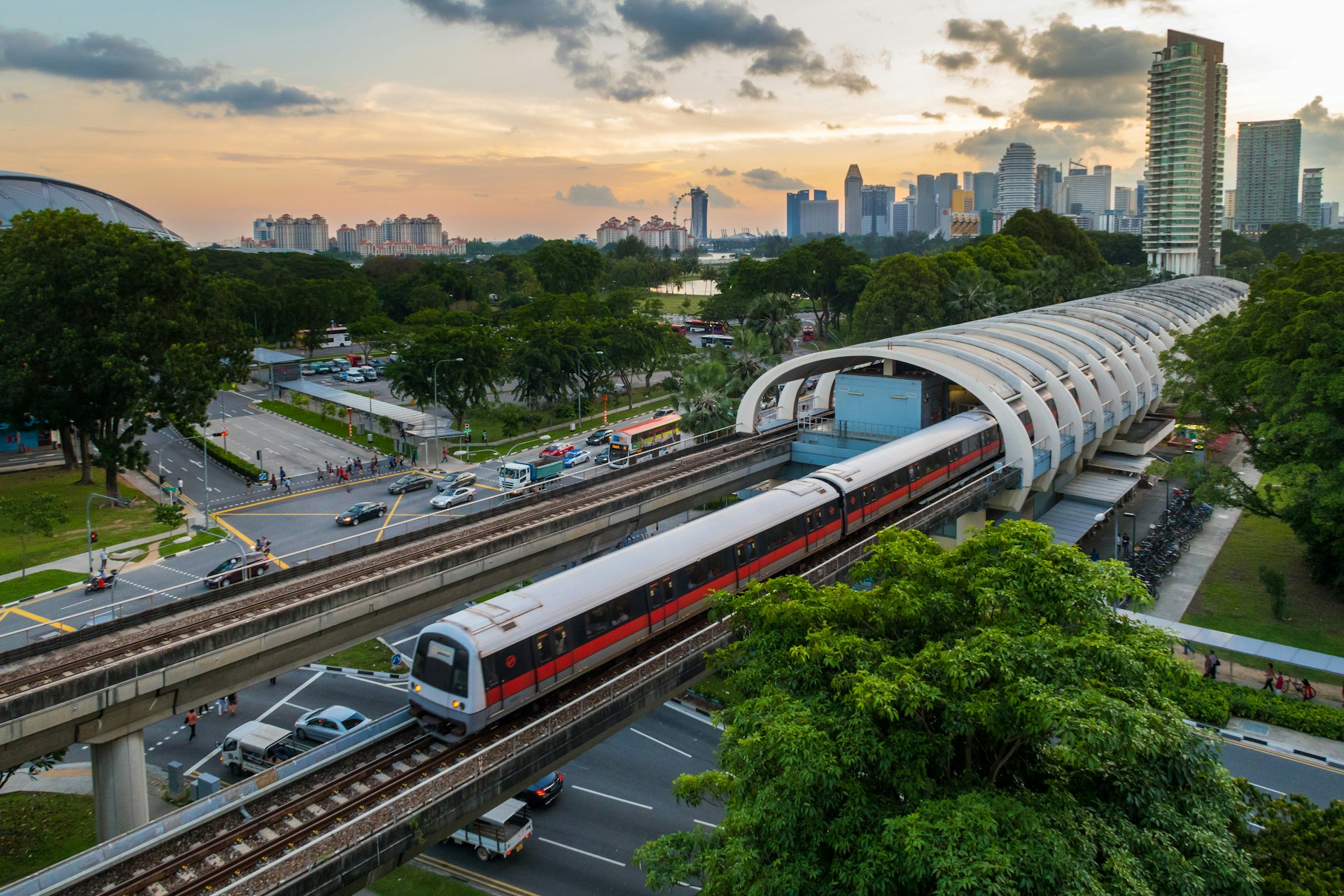
Get around Singapore easily on the MRT
Singapore’s subway system or the Mass Rapid Transit (MRT) is the most convenient way for travelers to get around cheaply and easily. Hopping on the MRT lets you avoid traffic jams, though platforms can get quite crowded during the morning and evening rush hours.
Navigating the MRT is quite straightforward for anyone used to a city metro. Currently, there are six MRT lines each marked with a distinct color, while stations are assigned numbers for easy identification – see the SMRT Journey Planner for the latest updates. Station signage and announcements are in the four official languages: English, Chinese, Malay and Tamil.
There are several smaller, driverless Light Rail Transit (LRT) systems that tourists are unlikely to encounter as they mostly serve residential neighborhoods. The Sentosa Express is a monorail line that connects from Vivocity Shopping Centre in Harbourfront to the offshore island of Sentosa.
See the sights on a budget with the public bus network
The public bus network is another cheap option for getting around Singapore. While you may get stuck in peak-hour traffic jams, taking the bus is a more scenic way to enjoy the journey. It can also offer direct connections on routes that may require multiple changes on the MRT.
Singapore’s bus network is extensive and covers most of the island, with frequencies typically from 10–20 minutes. Bus stops have a unique ID number to help you identify where to stop, and most bus stops will have some route information at the bus stop itself. Google Maps is fairly accurate when planning a bus route; other apps you can use include Citymapper and MyTransport.sg on Android or Apple.
Opt for free shuttle buses
There are some private shuttle bus services that may be more convenient than public buses. Notable ones for tourists include the free shuttle bus lines that go around Sentosa Island, the weekend Kranji Farms Shuttle to explore Kranji Countryside, and the Mandai Khatib Shuttle that goes from Khatib MRT Station to the various parks at Mandai Wildlife Reserve.
Get a transport pass or tap in/out with a local app
To use the public buses or MRT in Singapore, you will need to purchase a stored value card (EZ-Link Card) available at all MRT stations and bus interchanges. Alternatively, the SimplyGo initiative allows you to use your contactless debit or credit card to pay for public transport without registration required – just tap your phone, smartwatch or physical card.
The fares for traveling via bus or MRT in Singapore are calculated based on distance so make sure to tap in and tap out to ensure you are charged the correct fare. There are no single-trip tickets for the MRT, but you can use cash to pay on the bus – you will need exact change to pay for your fare. A helpful online fare calculator can provide estimated fare prices.
For tourists, you can consider the Singapore Tourist Pass which allows for unlimited rides on the public bus and MRT for 1–3 days.
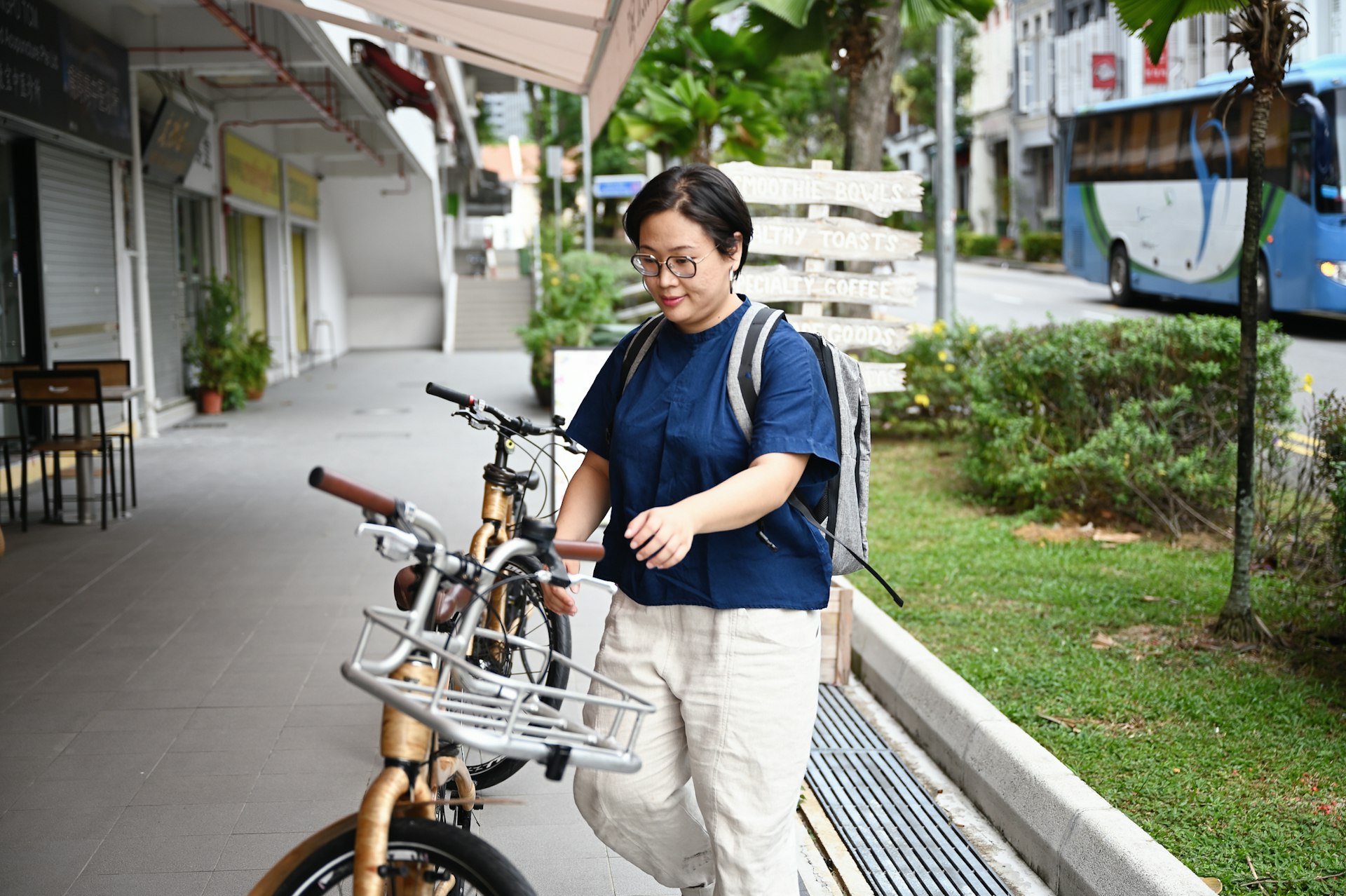
Shared bicycles are good for short distances
There are shared bicycles with multiple locations to pick up and return, like SG Bike and Anywheel, that can be accessed via an app. This is a cheap and green alternative to taking the bus or MRT, but best for covering shorter distances as the bicycles are quite basic.
While cycling has gained popularity in recent years, most of Singapore’s roads have not been built to accommodate bicycles, which can make road cycling challenging for those unfamiliar with the local driving culture. Also, the tropical humidity and sudden downpours can make cycling in Singapore less than pleasant.
Many of Singapore’s green spaces and parks have bike rental kiosks. East Coast Park, Bukit Timah Nature Reserve, Marina Bay, Sentosa and Pulau Ubin are popular spots to explore on two wheels.
Ride in comfort via taxi
If time is of the essence or you’re traveling in the wee hours of the morning, taxis may be a more comfortable way to get around Singapore. Taxis do cost more but can be economical if traveling in a small group.
Official taxis in Singapore have a small electronic "Taxi" sign on the roof. You can hail a cab along the road in suburban areas, but taxis are only allowed to stop at proper taxi stands in the Central Business District area. They are particularly hard to find when it is raining.
Standard taxi fares are distance-based, but there are many add-on surcharges based on when you ride, where you hail the cab and whether there are tolls on the route taken. All taxis in Singapore use the meter so there’s no haggling involved, and cash is the preferred method of payment. Some cabs may accept credit card payments but there is an additional 10% service fee and tax.
Book a rideshare for convenience
Rideshares are an alternative to taxis if you have a local data plan and access to the apps. You can usually book and pay through the app, but you may also be subject to surge pricing during peak hours.
Grab is the largest rideshare company in Singapore – there is no Uber or Lyft here. Other players in the market include Gojek, TADA and carpooling app Ryde. Taxis can be booked via Zig or via the rideshare apps.
There's no real need to drive in Singapore
Given Singapore’s small size and good public transport network, there is no real need for tourists to rent a car to explore the city. Most of the main sights are in the downtown area and well connected by MRT or bus, and for more out-of-the-way spots, calling a taxi or rideshare is much easier and economical than renting a car where you have to factor in the costs of fuel, road tolls and expensive parking.
There are car-sharing options like BlueSG, TribeCar or GetGo that you can consider if you really must drive – note that vehicles in Singapore drive on the left side of the road.
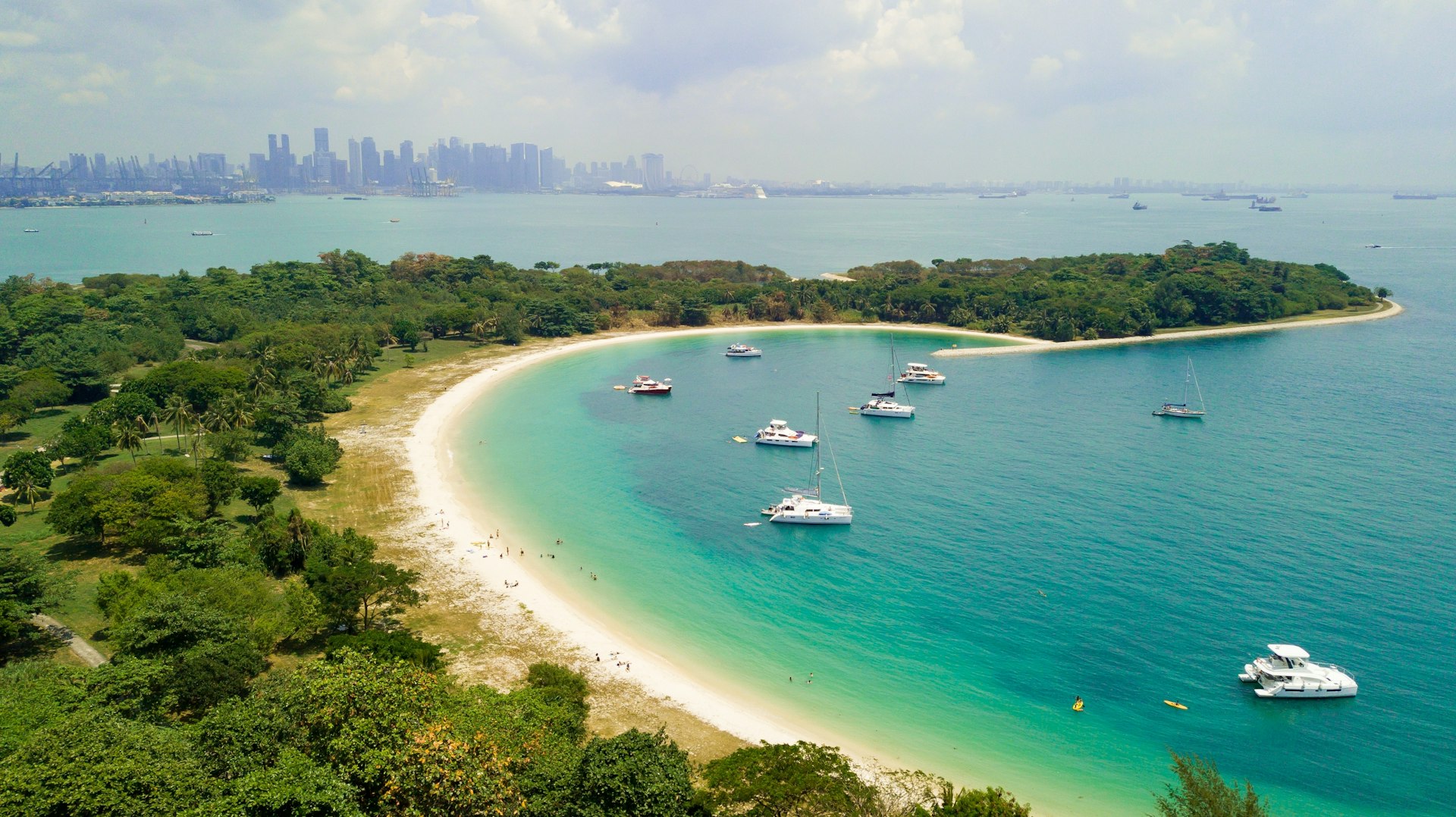
Sail to Singapore’s outer islands on the public ferry
You can charter a private boat to explore Singapore’s offshore islands, but the public ferry is the cheapest way to access them. To get to Pulau Ubin in the northeast, head to Changi Point Ferry Terminal where there are small bumboats that take you to the island in just 10 minutes.
If you want to explore the Southern Islands (St John’s Island, Lazarus Island and Kusu Island), Singapore Island Cruise and Marina South Ferries both run regular ferry services from Marina South Ferry Terminal.
Accessible transportation in Singapore
Most of the buses and trains in Singapore have spaces and ramps equipped for strollers, wheelchairs and personal mobility aids, as well as marked priority seats for those who need them. Train stations and bus stops are barrier-free with at least one entrance that is accessible, and staff are trained to provide assistance if necessary.
For taxis, there are specialized transportation services with wheelchair-accessible vehicles and medically trained drivers such as Strides Care and Caring Fleet.
Learn more about accessible travel options by downloading Lonely Planet's free Accessible Travel guide.


